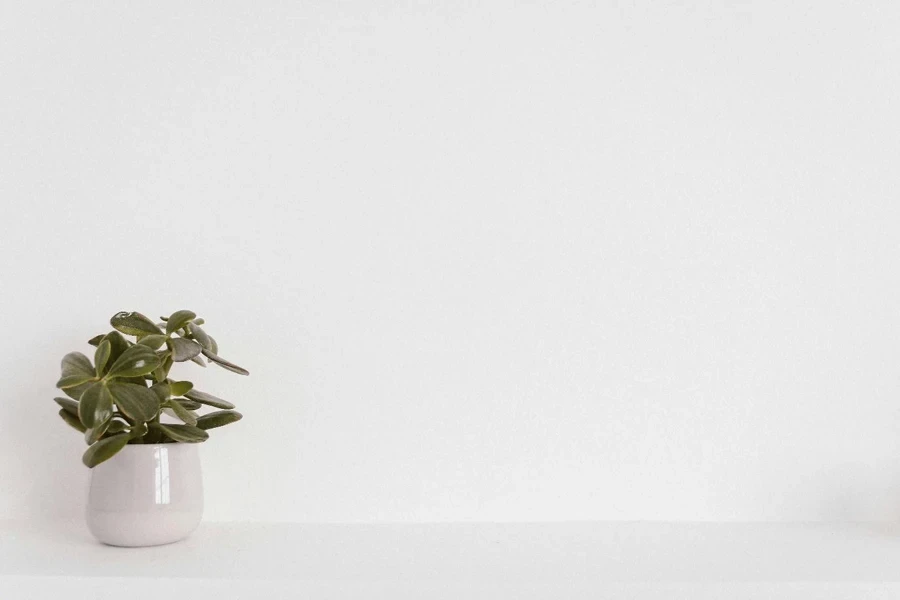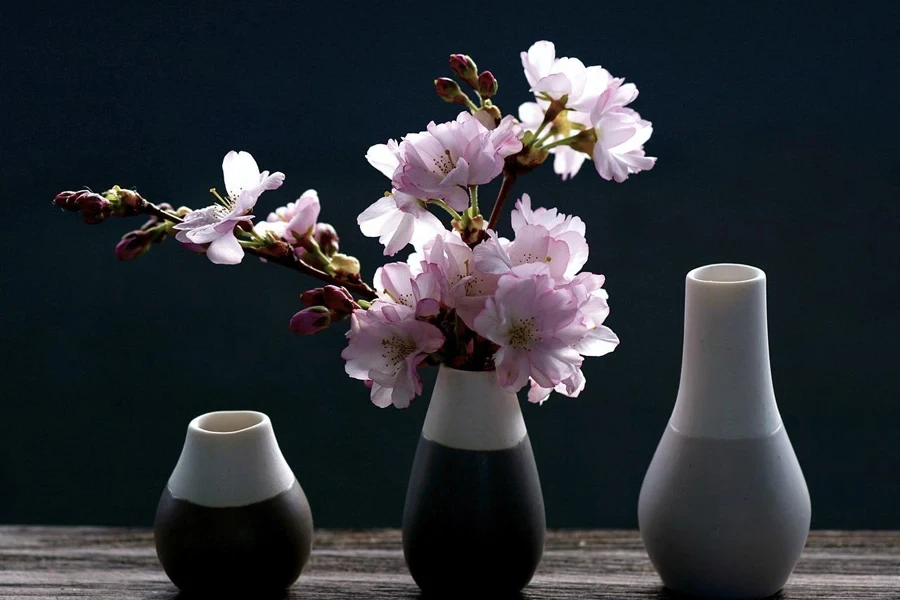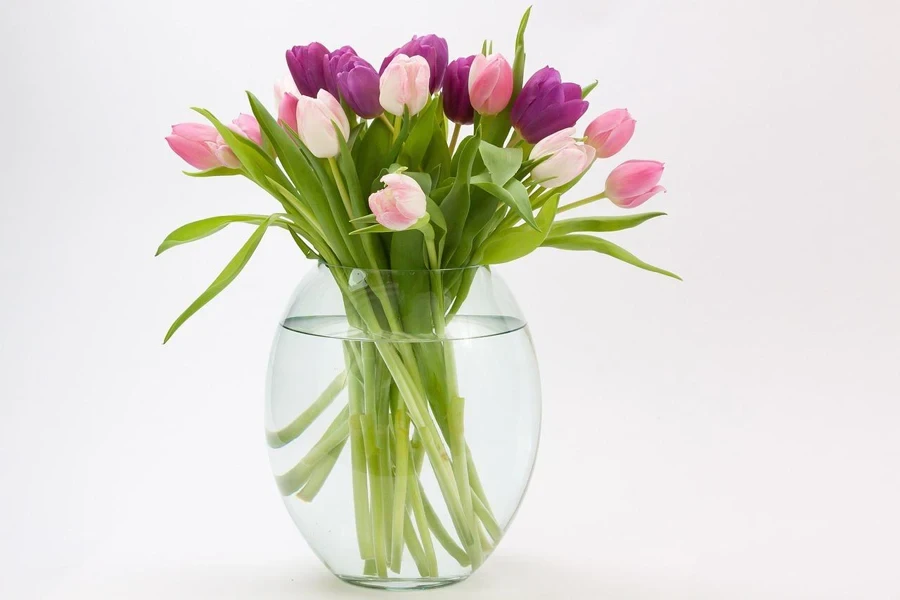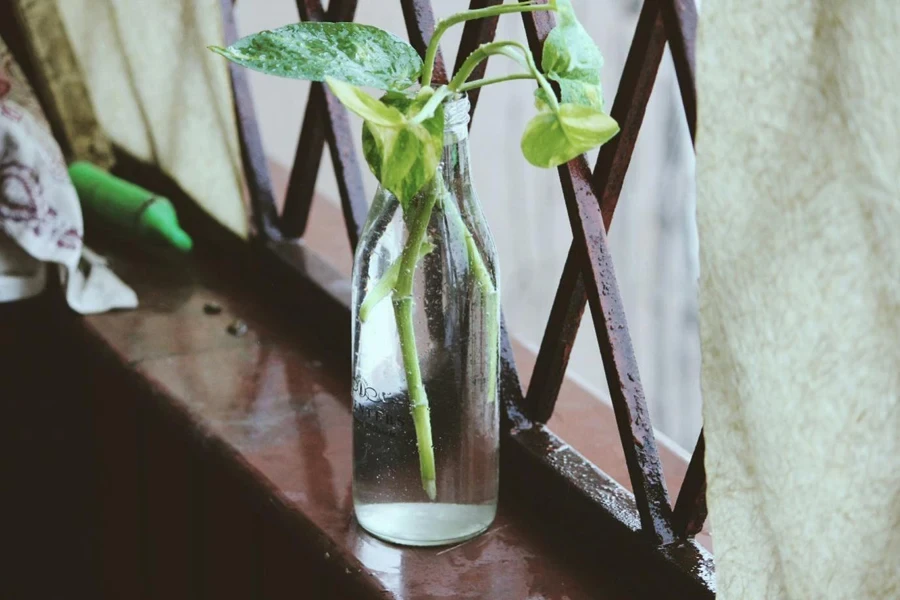Table of Contents
● Introduction
● Market overview
● Different types and their features
● Things to consider when selecting products
● Conclusion
Introduction

Glass and crystal vases add a touch of sophistication and adaptability to any room they grace. The demand for these vases is growing quickly due to rising incomes and a heightened interest in refined home decorations. Given the many materials and styles available, choosing the right vase involves thoughtful deliberation of its visual appeal and practical utility. Current trends favoring sustainability and conscious designs also play a significant role in shaping the market landscape. Having insight into these factors is crucial for making informed decisions that enhance the ambiance of any living space.
Market overview

Market scale and growth
The market for glass and crystal vases is seeing an uptrend in growth forecasts. It is set to surge from $31.64 billion in 2024 to $46.7 billion by 2032 growing at a CAGR of 4.99%. Higher disposable incomes and urbanization spurt power this substantial rise. These factors lead to more investments in home adornments and embellishments for a comfortable living space appeal.
Insights from regions show that North America, Europe, Asia Pacific (APAC), South America, the Middle East, and Africa are important markets in the home decor industry. North America and Europe dominate with their known luxury brands and strong consumer interest in home decorations. Due to growing urbanization and higher disposable incomes, APAC is experiencing significant market expansion in nations such as China and India.
Different types and their features

Material-based analysis
Glass vases
Glass vases have a lot of flexibility and visual charm since they come in various shapes and sizes, which are pleasing to the eye. These vases are usually crafted from high-quality silica sand along with soda ash and limestone that are melted at high temperatures to produce clear and tinted glass. The thickness of the glass can differ based on the desired level of sturdiness and weight. Many glass vases showcase designs or textures achieved through techniques like etching or shaping to elevate their aesthetic appeal.
Crystal vases
Crystal vases are famous for their transparency and shine, achieved by incorporating lead oxide into the glass blend. This formula elevates the vase refractive index, creating a dazzling sparkle that complements upscale environments. With unique cutting and polishing techniques, crystal vases are frequently crafted by hand to attain intricate designs. The weight and thickness of crystal vases typically exceed that of glassware, giving them a substantial feel and robustness.
Ceramic vases
Artisans create ceramic vases using natural clay; the material is molded and then subjected to high temperatures to achieve hardness through firing techniques. The vases can be coated with a glaze for a sleek look or left unglazed for a more rugged appeal. The firing process involves bisque and glaze firing to strengthen the vase and enhance its color. Decorative touches such as painting or carving can be added to vases using various techniques, resulting in many visual options.
Wood vases
Wooden vases add a natural feel to interior design. They are commonly made from sturdy woods such as oak or walnut and shaped using a lathe. They are often coated with oils or varnish to highlight the wood’s natural patterns and ensure durability. Each vase boasts its distinct charm, thanks to the unique grain and variations in the wood. Additive vases may feature intricate carvings or inlays that elevate their artistic appeal.
Metal vases
Metal vases are typically made from steel and brass and undergo processes such as casting or welding to create precise shapes and smooth finishes. These vases can be finished using powder coating or electroplating techniques to achieve unique colors and textures. They are valued for their durability and ability to withstand indoor and outdoor environments.
Shape-based analysis
Mason jar
Using Mason jar vases can bring a practical touch to your space. They are usually crafted from sturdy transparent glass with a broad opening and screw-on lid for easy maintenance. This makes them perfect for putting together simple flower arrangements effortlessly styled for everyday use. The jars sometimes come with raised designs or tags contributing to their vintage vibe.
Cylinder vase
Cylinder vases are characterized by their straight sides and uniform diameter, typically made from glass or crystal. Their height-to-width ratio can vary, but they generally range from short and stout to tall and slender, making them suitable for a variety of floral arrangements. The clean lines of cylinder vases provide a modern and minimalist aesthetic.
Bud vase
Small bud vases are crafted to display flowers or small groupings of flowers. They are available in different shapes, such as circular or square, with fluted designs. Their petite dimensions make them perfect for highlighting blooms and fitting into confined areas. These vases are commonly crafted from glass or ceramic materials. Still, some may also incorporate touches like etched designs or color transitions.
Amphora vase
Ancient Greek pottery inspires amphora vases with their necks and bulbous bodies supported by two handles. They are crafted from materials like ceramic or metal and either left plain or adorned with detailed designs.
Cube vase
Cube vases are recognized for their form and sleek outlines and are commonly crafted from glass or acrylic materials. They come in various sizes, from cubes that accommodate single flowers to larger ones that are perfect for bigger floral displays. The simple and understated design of cube vases allows them to blend well with interiors. Their short stature makes them ideal for crafting centerpieces that do not overpower the overall aesthetic.
Things to consider when selecting products

Aesthetic preferences
Selecting a vase that complements the overall home decor theme is crucial in achieving a unified aesthetic appeal within your living space. In interior design, vases featuring crisp geometric shapes and sleek textures are highly favored choices, commonly crafted from polished stainless steel or frosted glass. For those aiming to embrace a vintage-inspired ambiance in their decor, vases adorned with intricate etchings or hand-painted motifs can add a touch of charm, often constructed from materials such as lead crystal or glazed ceramic. If you’re leaning towards a style that celebrates diversity and individuality, opt for vases with rugged surfaces or natural hues, like terracotta or reclaimed wood, to infuse warmth and character into your space. The specific information guarantees that the vase functions not only as a container for flowers but also as a chic decorative piece.
Functional requirements
Various types of flowers call for vase designs to properly showcase them and provide adequate support. For instance, stemmed flowers like delphiniums or sunflowers look best in tall, narrow vases with sturdy bases to prevent wobbling. Bouquets with a mix of flower varieties are off in wider vases such as bowls or cubes, allowing for a more spacious and abundant arrangement. When deciding where to place a vase, consider this rule of thumb. For table vases, make sure they are not taller than half the height of the flowers so they remain stable and visible; floor vases can be taller. Have a more artistic touch, serving as beautiful standalone decor items simultaneously.
Material durability and maintenance
Glass and crystal vases are renowned for their clarity and brilliance attained through meticulous chemical compositions and production methods. A prime example is crystal, which comprises a minimum of 24% lead oxide to enhance its refractive qualities. Nevertheless, the susceptibility of these materials to chipping necessitates care and frequent polishing to uphold their shine. On the other hand, metal vases are made from alloys such as bronze and stainless steel, designed for longevity and protection against corrosion. They are commonly coated with finishes to ward off tarnishing. Wooden vases made from wood like oak or teak are coated with sealants to protect them from water damage and cracking. They may also have carvings or decorative designs that enhance their beauty. Ceramic vases are hardened through high-temperature kiln firing. They are commonly finished with a glaze for both waterproofing and aesthetic purposes.
Sustainability and eco-friendliness
The shift towards sustainability in creating vases involves using recycled materials and friendly production methods. Recycled glass vases are crafted by melting consumer glass and reshaping it into new designs to lessen the demand for raw materials and energy usage. Wooden vases made from managed forests or reclaimed wood reduce environmental harm and showcase distinctive grain patterns and characteristics. Innovative ceramic production techniques may include low-energy kilns and eco-friendly glazes to minimize carbon emissions. Furthermore, some companies use self-contained water systems and solar energy in their manufacturing plants to improve the friendliness of their goods even more . By opting for products from these sources, you are backing sustainable methods and playing a role in creating a greener environment.
Conclusion

When choosing a glass or crystal vase for your space or business needs, it’s crucial to balance style preferences and practicality while considering environmental impact and durability factors in your decision-making process. By keeping up to date with the design trends and having a thorough knowledge of the various vase options today, businesses can create curated selections that elevate interior design aesthetics with a touch of class and refinement. Highlighting the blend of beauty and functionality ensures that these ornamental pieces keep up with changing consumer tastes and advocate for environmentally conscious choices in home decor.




